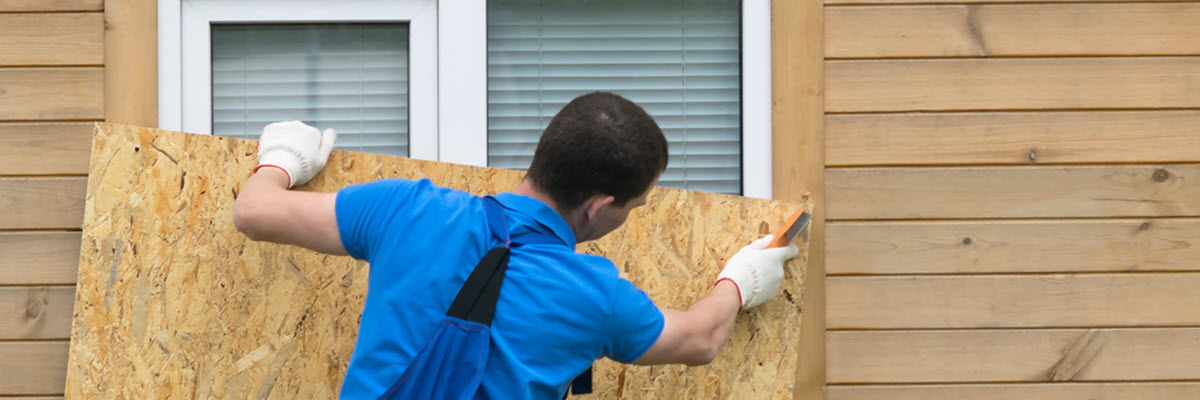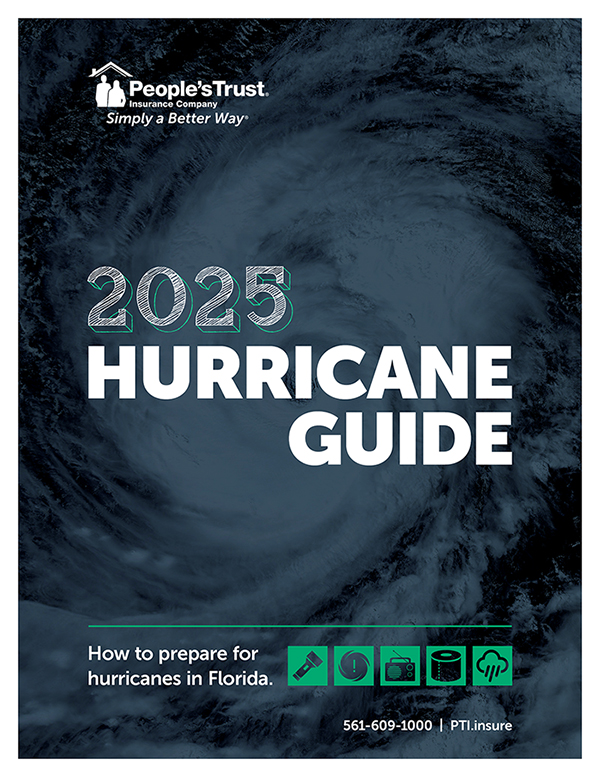Hurricane Hub
Tips and insights to help you handle those inevitable Florida hurricanes.
How to Prepare for a Hurricane

When it comes to hurricane season in Florida, preparation is key! The start of hurricane season is the ideal time to plan and purchase the supplies you need, fortify your home, and know the resources available for staying prepared all season long. However, it’s challenging to figure out everything you need to do. On top of your day-to-day life, an oncoming hurricane seriously expands your shopping and chore lists! To help, we’ve compiled this guide on some of the most important aspects of preparing for a hurricane. For an even more complete walkthrough, be sure to download our free Hurricane Preparedness Guide.
Gather Supplies
One of the most common effects of hurricane damage is the loss of electricity and/or running water. This could leave you stuck at home for a while without the typical creature comforts we all take for granted, so it’s recommended that you stock up on supplies well before you’re in the cone of uncertainty.
That includes not only the obvious items like food, water, and medicine but also things like extra cash (since debit and credit cards need electricity to work), gasoline (gas stations can take a little while to reopen), and toiletries (hurricanes are definitely a bad time to run out of toilet paper, garbage bags, or other necessities).
Check out our Hurricane Preparedness Checklist for a full list of hurricane supplies you should have on hand.
If possible, get your supply shopping done early in the season. That way, you won’t have to deal with the last-minute rush that tends to occur right before a hurricane hits.
Pro tip: Florida has a tax-free period for hurricane supplies every year during the first week of June, right when hurricane season starts. Use this time to stock up on all of your supplies for the season while saving a few dollars!
Fortify Your Property
Everyone’s home is different. And when it comes to preparing for a hurricane, some need more work than others. Take a stroll around your property and pay special attention to these 3 main areas:
1. Landscaping
Since palm trees shed their fronds year-round, they always have dead, dying, or loose branches that a hurricane can easily turn into wind-propelled missiles. Before the storm arrives, clear low-hanging branches and clean up any yard waste (including anything in your gutters). If you hire a trimming service, ask for a “hurricane cut,” which removes all but the freshest fronds near the top of the palm trees.
Other trees should be pruned as necessary. The denser their branches are, the easier hurricane winds can “grab hold” and uproot them. For trees close to your house, it’s usually safest to cut them down completely to guarantee they won’t fall and crush your roof.
2. Outdoor Items
Bring inside any outdoor items that aren’t nailed down, such as potted plants, toys, decorations, BBQ grills, trash cans, furniture, and hanging fixtures (like wind chimes, chandeliers, or rain chains). Hanging fixtures that can’t be removed should be tied to a secured structure so that if they break loose, they will hit the ground rather than fly through the air.
If possible, park your vehicles in the garage against the garage doors. If you don’t have a garage, make sure you are not parked under anything that can fall over (like trees or power lines) or near flood-prone low-lying areas. Move vehicles into your garage or under cover.
3. Windows
Set aside a couple of hours to organize and label your storm shutters and practice installing them – that way, you won’t be rushing to figure out where each one is supposed to go when a hurricane is close. If you don’t own shutters, board up your home’s windows with ⅝-inch thick plywood. Either option will protect your windows from high winds and debris.
Stay Informed
Knowledge is power! Hurricanes may give plenty of advance warning, but their path, intensity, and projected impact change a lot until they actually make landfall. We recommend using the following resources to stay informed so you can plan accordingly.
- The National Hurricane Center provides up-to-date information on tropical storm developments, forecasts and weather alerts
- Florida’s Division of Emergency Management publishes maps for every county’s evacuation zones, evacuation routes, and storm surge areas. They also have a list of where each county’s Emergency Management office publishes news and announcements
- FEMA provides flood-mapping tools to help you determine if your property is on flood-prone land. This can help you know how your property may be affected when storm surge or tidal flooding is in the forecast.
- Understanding the coverage provided by your home insurance policy is an important step in preparing for a hurricane. Take some time to review your insurance policy so you can be confident your home is protected in the event of a major storm.
Unfortunately, you can’t control the weather. But if you prepare by getting the right supplies, fortifying your home, and staying informed, you’ll have everything you need to make it through hurricane season.
Download PTI’s Hurricane Preparedness Guide for more tips on how to prepare for hurricane season in Florida.

